Norbert Joos is dead
Again one of the really great high altitude climbers was torn out of his life: The 55-year-old Swiss Norbert Joos fell to death on Piz Bernina in the canton Grisons. According to Swiss media reports, Joos had guided a group to the 4049-meter-high summit. On the descent the roped party of three, to which Joos belonged, fell 160 meters deep. Joos was found dead, the other two climbers, a woman and a man from Italy, survived seriously injured.
![]() read more
read more
Ueli Steck regains Eiger record
While I got footsore during my “Power pilgrimage for Nepal”, Ueli Steck “ran” fleet-footed through the Eiger North Face (look at the video below). “Speedy Ueli” climbed the Heckmair route – the way of the first ascender in 1938 – solo in just two hours and 22 minutes. Thus, the 39-year-old top climber from Switzerland regained the speed record in this legendary, 1800-meter-high wall that he had lost in 2011 to his compatriot Dani Arnold (2:28 hours). In 2008, Steck had climbed the wall in 2:47 hours. “I had a good track and good conditions”, Ueli said after his tour de force through the North Face adding that it was “a beautiful experience and a great day”.
![]() read more
read more
Avalanche on Dôme de Neige kills seven climbers
Seven climbers have lost their lives in an avalanche in the French Alps today. The incident happened on the 4015-meter-high Dôme de Neige in the Écrins massif southeast of Grenoble. The French authorities said that four Germans and three Czechs died in the avalanche. Another injured female climber from Germany was rescued. It is said that three rope teams were hit by the snow masses. According to the rescuers, the 250-meter-long avalanche was likely triggered when a snow slab separated and hurtled down the slope. Last weekend it had heavily snowed in the region. “The conditions are winter-like at the moment“, a policeman said. At least 39 people have died in snowslides this year in France, according to the National Association for the Study of Snow and Avalanches.
Speedy Ueli
Actually, Ueli Steck doesn’t like the nickname “Swiss Machine”. But once again he confirmed his reputation. As a precisely running Swiss watch, the 38-year-old completed his project “82 Summits”– on the double: “Speedy Ueli” scaled all 82 four-thousanders of the Alps in only 61 days, 19 days faster than previously intended. He covered the distance between the mountains using muscle power only: by bike or on foot.
With changing partners
Ueli shortened the descent from the peaks by paragliding where possible. Doing this he early had to say good-bye to his original partner for the project.
![]() read more
read more
Matterhorn: ”For climbing okay, but not very special”
The Matterhorn was his first four-thousander. Dani Arnold was 18 years old when he first scaled the prestige mountain of his home country from the Höernli Hut on the normal route in 2002. Today the 31-year-old is one of the best climbers in Switzerland. Since then, he has been „maybe eight times on top“ of the Matterhorn, Dani writes to me from Pakistan, where he is currently trying to climb first through the North Face of the seven-thousander Latok I, along with the German Huber brothers and the Austrian Mario Walder. In recent years, Arnold made headlines in particular with his speed records. Since 2011, he is holding the record on the Eiger North Face. He climbed the wall on the route of the first ascent in two hours and 28 minutes. Thus Dani was 20 minutes faster than the previous record holder Ueli Steck. This April, he also broke Steck’s speed record on the Matterhorn North Face. It took Arnold an hour and 46 minutes, spending ten minutes less on the wall than Ueli did in 2009. The Matterhorn, 150 years after the first ascent, from the perspective of a professional climber:
Dani, all over the world the Matterhorn is a symbol for Switzerland. How do you see this mountain? Or in other words, what does it mean to you?
![]() read more
read more
“Recovery of dead is always sad – not only on the Matterhorn”
Even the first ascent of the Matterhorn 150 years ago ended in tragedy. Four team members died during the descent from the summit, when a rope ruptured. Since then, more than 500 climbers died on the “Horu”, as the locals call the Matterhorn – more than on any other mountain in Switzerland. Year after year there are between 2,500 and 3,000 summit attempts, also resulting in a lot of work for mountain rescuers. Helmut called “Helmi” Lerjen comes from a true mountain guide family. In the fourth generation, the Lerjens are guiding clients on mountains like the Matterhorn. Helmi, who is living with his wife and daughter in the small village of Täsch, close to Zermatt, has also been working for the Mountain Rescue Zermatt for almost 15 years. The Matterhorn, 150 years after the first ascent, from the perspective of a mountain rescuer:
Dani, all over the world the Matterhorn is a symbol for Switzerland. How do you see this mountain? Or in other words, what does it mean to you?
![]() read more
read more
“Three times through Zermatt is too little for the Matterhorn”
Probably Richard Lehner would find the summit even blindfolded. The veteran mountain guide from Zermatt has reached the highest point of the Matterhorn at 4,478 meters 650 times. This is not the record but nevertheless he would deserve the title “Mr. Matterhorn”. The 76-year-old has passed on his passion for the mountains to his children. Two of his sons are mountain guides too, one is a ski instructor. Richard Lehner is one of 87 listed active mountain guides of the Alpin Center Zermatt, the local Mountain Guides Association. The Matterhorn, 150 years after the first ascent, from the perspective of a mountain guide:
Richard, all over the world the Matterhorn is a symbol for Switzerland. How do you see this mountain? Or in other words, what does it mean to you?
As a mountain guide, I have been working mainly on the Matterhorn. I have scaled the mountain 650 times. I was on top for the last time five years ago. For me, it has always been a beautiful mountain.
650 climbs – how often did you find yourself in critical situations?
![]() read more
read more
150 years ago: Triumph and tragedy on the Matterhorn
The clock is running. In a week from now, the countdown clock on the station square in Zermatt will jump to zero. On 14 July, exactly 150 years ago, the Matterhorn was first climbed. No other mountain in Switzerland embodies the country more than this shapely four-thousander. And that’s not just because of a famous chocolate brand that is sold around the world, the bars of which modeled like the Matterhorn. Every year, 2,500 to 3,000 climbers try to reach the 4,478-meter-high summit – most of them via the Hörnli Ridge, the normal route that was also taken by the first ascenders headed by the Englishman Edward Whymper. The Hörnli Hut at 3,260 meters, starting point of most aspirants, has been rebuilt and modernized at great expense. In time for the Matterhorn anniversary it was finished. On the day itself, the mountain should be left in peace. Therefore the Matterhorn will be closed for ascents on 14 July – in order to remember all the people who died on the mountain.
![]() read more
read more
150 years ago: First ascent of the Aiguille Verte
If there really is such a thing as a “Golden Year” of climbing in the Alps, it was 1865: More than sixty important first ascents were made on the highest mountains of France, Switzerland and Austria. The most spectacular was certainly that of the Matterhorn on 14 July. But Jungfrau, Wetterhorn, Breithorn, Ortler and Piz Buin were also first climbed in 1865 – and the Aiguille Verte, today exactly 150 years ago. On 29 June 1865, just after 10 a.m., the Briton Edward Whymper, the Swiss mountain guide Christian Almer from Grindelwald and his colleague Franz Biner from Zermatt reached the 4122-meter-high summit in the Mont Blanc range. The first ascent of the “Green Needle” was one of the most coveted alpine goals of those days.
![]() read more
read more
82 four-thousanders in 80 days
They are on the way. The two top climbers Ueli Steck from Switzerland and Michi Wohlleben from Germany have now scaled the first of the 82 four-thousanders of the Alps, the 4,048-meter-high Piz Bernina in Switzerland. At 10 a.m. they reached the summit, after they had spent the night at the Tschierva Hut at 2,573 meters above sea level. Within just 80 days, the 38-year-old Ueli and the 24-year-old Michi want to climb all four-thousanders of the Alps, which are located in Switzerland, Italy and France – if possible, not on the normal but on more demanding routes.
![]() read more
read more
Rope team of 193
The clouds were hanging low, it was cool. Not exactly the perfect weather to tempt curious or spontaneous people to climb up to over 3,000 metre to the Koednitzkees, a glacier below the summit of Grossglockner, the highest mountain of Austria. On Saturday – as reported here – the “longest rope team of the world” should be formed there. A notary certified the number of participants of the action which in case of success should find its place in the Guinness Book of Records. Despite the bad weather 193 mountain friends roped up to a length of 600 metres. “The exercise has been successful,” said Peter Ladstätter, district head of the mountain rescue in Osttirol (Eastern Tyrol) who had organized the event.
![]() read more
read more
Never without rope on a glacier
The longest rope team of the world. That is the goal of an action on Grossglockner, which, if it works, will find its place in the Guinness Book of Records. On Saturday at 2 p.m. mountain rescuers of Osttirol (Eastern Tyrol) will rope up as many climbers as possible on the Koednitzkees, a glacier below the highest peak of Austria. A notary is commissioned by the Guinness Book of Records to count the participants. Afterwards the Austrian artist Dieter Remler will make a performance, according to the motto: “As free as an eagle, with a person’s mind”. This is just one of several actions in Osttirol during this weekend which is dedicated to safety in the mountains . I contacted Peter Ladstaetter, district head of mountain rescue in Osttirol. He has organized the action on the Koednitzkees .
Peter, what is the message of forming the longest rope team of the world?
Our key message is: It must be a standard to take a rope before you enter or cross a glacier. Unfortunately many do not know that glacial ice is always moving and therefore also crevasses are “walking”. There are many falls which only end without serious consequences – in most cases even unhurt – because the mountaineers are roped up.
![]() read more
read more
Siegrist: Eiger North Face is largely exhausted
Hinterstoisser Traverse, Swallows Nest, Death Bivouac. When I was a boy of ten I sat on holidays in Grindelwald using my binoculars to study the Eiger North Face. I had devoured “The White Spider”, Heinrich Harrer’s well-known book. I was so fascinated that I got up at night and looked on the route for bivouac lights. On this Wednesday 75 years ago the Eiger North Face was climbed successfully for the first time. The four pioneers of 1938 are dead. The last of the German-Austrian team who died was Harrer in 2006.
I ring Stephan Siegrist up. The 40-year-old mountaineer from Switzerland has a special relationship to the Eiger North Face. He has already climbed the wall 29 times, opened two new extremely hard routes together with his compatriot Ueli Steck – and climbed on the trails of the quartet of 1938.
Stephan, 75 years ago the Germans Anderl Heckmair and Ludwig Vörg and the two Austrians Heinrich Harrer and Fritz Kasparek climbed the Eiger North Wall for the first time. What do think about their performance?
For me it’s still one of the greatest things that have ever been made in the Alps. You have to imagine that the strain was very great. They knew that many climbers before had died in the wall. And climbing it with the material of these former days was truly heroic.
![]() read more
read more



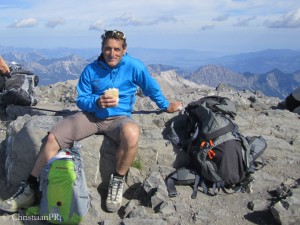

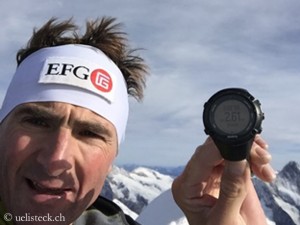
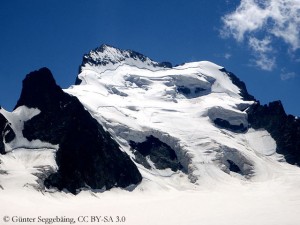
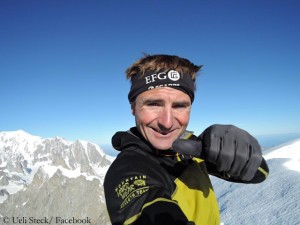
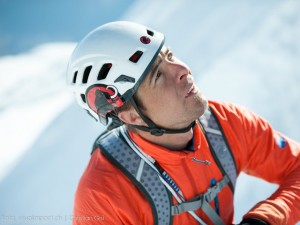
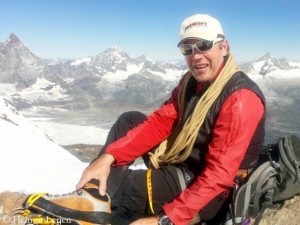
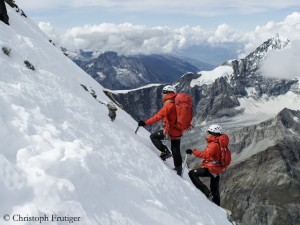
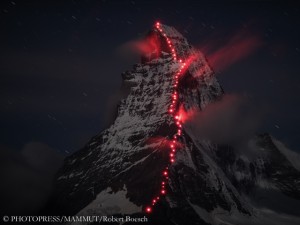
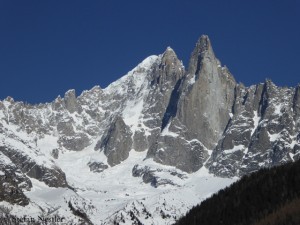
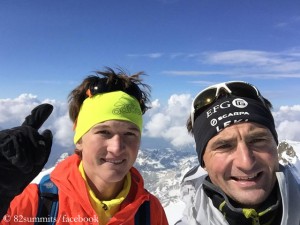
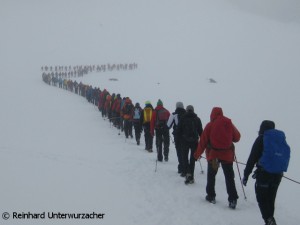
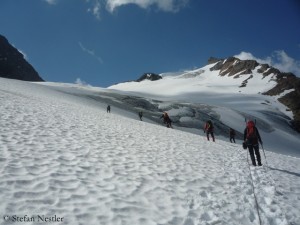
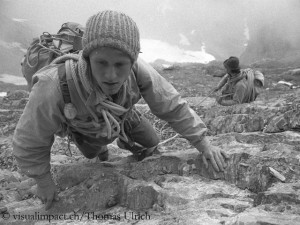

Feedback